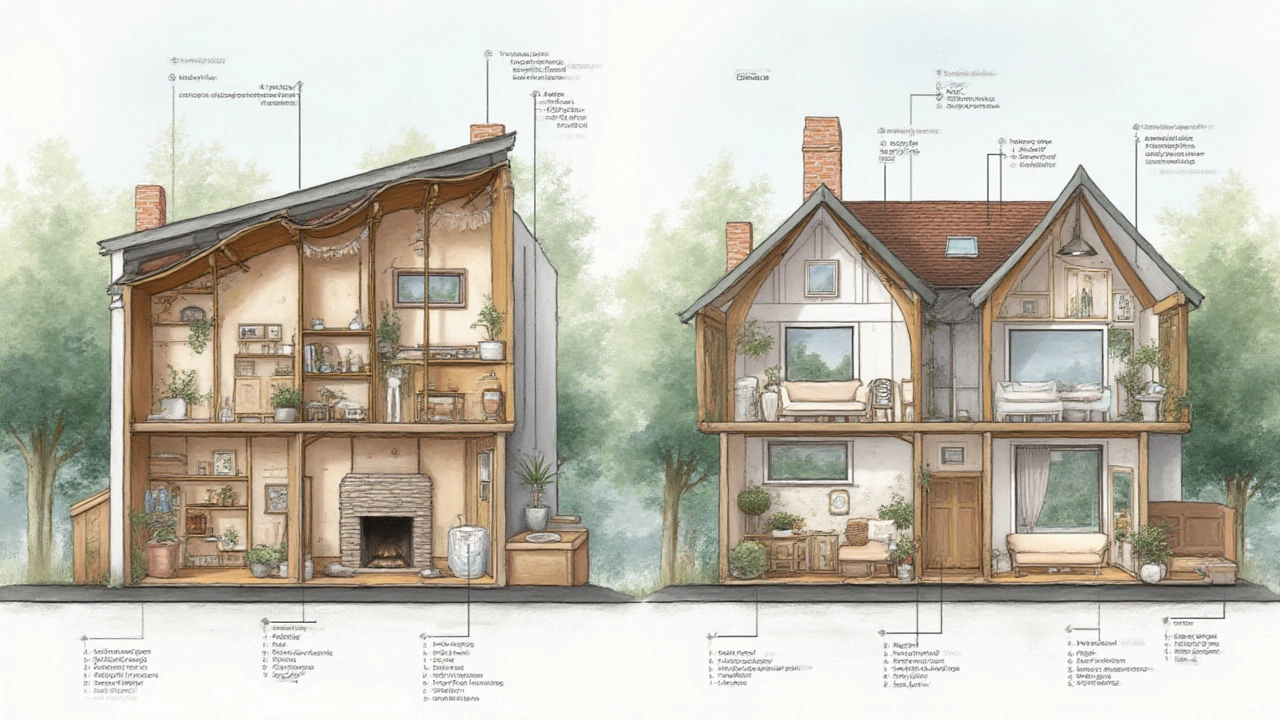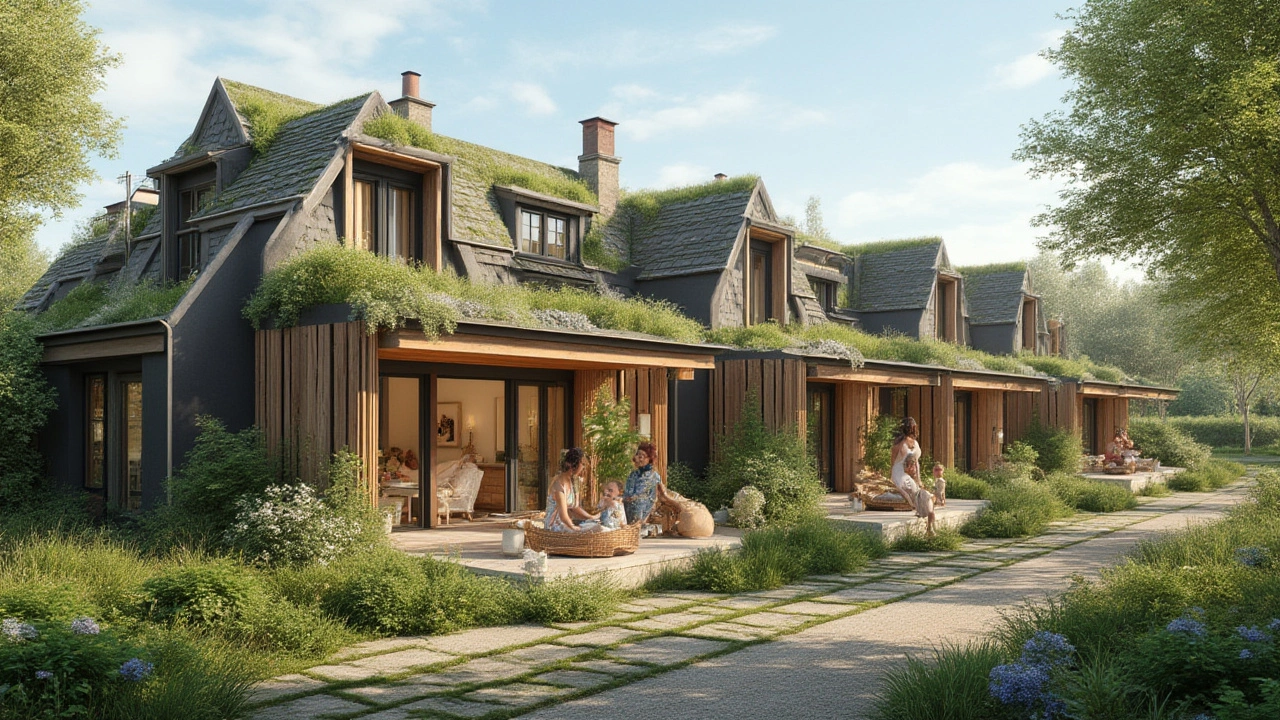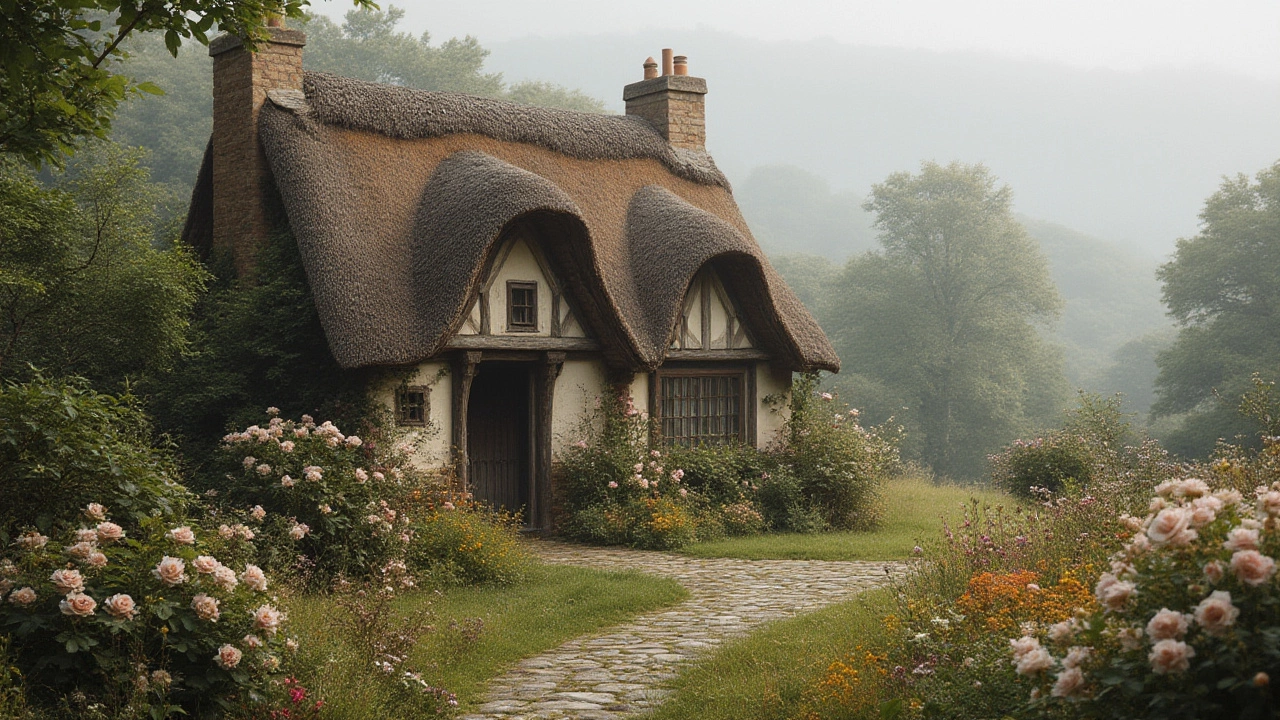Think of the word “cottage,” and for most folks, a vision pops up: white-washed walls, a thatched roof, maybe some roses snaking around the windows—a real storybook vibe. But what actually counts as a cottage these days? Can you own a 2,000-square-foot 'cottage?' Or is there a hard size limit? In my own neighbourhood here in Auckland, there are buildings called ‘cottages’ that could swallow my mum’s whole house back in Christchurch. So where’s the line, and why does everyone have a different idea?
Where Did Cottages Come From, and What Sets Them Apart?
First, let’s clear the cobwebs about what a cottage really is. The word itself goes back to medieval England, where “cotters” lived in small, simple homes on rural estates. Their dwellings were short on space, basic in materials, and always a bit quirky—built with whatever was at hand. The idea stuck, so much so that even in 2025, people still dream of escaping to a no-fuss, cozy place in the countryside. But a cottage is way more than a small box—it’s about intimacy, charm, and connection to its setting.
Architecturally, cottages have thick walls, low ceilings, and a real focus on comfortable nooks instead of sprawling open-plan kitchens. There’ll be a garden right at your doorstep—maybe some wildflowers or veggies out back. Fireplaces feature strongly, because cottages weren’t always wired for electricity. There’s often a mix of materials—stone, timber, brick—all tossed together by necessity. Furnishings tend to lean rustic, and windows are smallish to keep out cold winters or hot summers, depending on where you are.
Cottages today might be built brand new or painstakingly restored. In some countries, like New Zealand or Ireland, the term can apply to old miner’s shacks just as much as manicured Lake District getaways. But the size? Well, that’s where things get interesting. Let’s dig into dimensions next.
What Size House Counts as a Cottage?
If you hunt through real estate listings in Britain, the US, even here in New Zealand, you’ll notice “cottage” used for houses that range wildly in size—from dinky single-bedroom affairs to four-bedroom spreads. There is no single legal definition anywhere on the planet (I checked!), but here’s where the numbers generally land.
Traditionally, a cottage is a detached property with a floor area between 600 and 1,200 square feet (that’s about 55 to 110 square meters). In more modern usage—and especially in wealthier countries—houses called ‘cottages’ often push up to 1,500 square feet, or around 140 square meters, especially if you count attic rooms or sunrooms squished onto the side.
Here’s a quick comparison of home sizes, putting things in perspective:
| Type of House | Typical Size (sq. ft.) | Description |
|---|---|---|
| Micro House | <100 | Usually for singles, minimalist life |
| Tiny House | 100–400 | Often on wheels, designed for max efficiency |
| Traditional Cottage | 600–1,200 | 1–2 bedrooms, intimate design |
| New-Build Cottage | 1,200–1,500 | Slightly larger, more modern amenities |
| Standard Family Home | 1,800–2,500 | 3–4 bedrooms, more open-plan |
| Large Villa | 2,500+ | Sprawling, luxury features |
The key is that a cottage feels smaller in spirit, even if the square footage creeps up. Ceiling height is usually lower (you’ll notice this when you bonk your head on a beam), the rooms are cozy, and the floor plan rarely sprawls or wastes space. Folding doors, alcoves, cupboards built into awkward places—these are all signs you’re truly in cottage territory. If your house feels “intimate” rather than “grand,” you’re probably in a cottage, no matter what the agent calls it.

The Must-Have Features that Turn a Small House into a Cottage
So, size alone doesn’t make a cottage. It’s more about the bones and soul of the place. Here’s what almost all true cottages share:
- Quirkiness. This might be an uneven floor, a staircase jammed into an odd space, or the tiniest of kitchens. Even purpose-built modern cottages go for a “charm-over-flash” vibe. There are usually more nooks, shelves, and tucked-away corners than you’ll see in modern subdivisions.
- Garden Connection. Even the smallest patch counts. Cottages usually sit right up against a personal slice of greenery—flower beds, vegetables, fruit trees, a rambling rose bush, or just a few herbs in pots. If there’s a picket fence or crumbling stone wall, all the better.
- Local Materials. Older cottages in New Zealand often use native kauri or rimu timbers, sometimes even bits of beach-found stone. In the UK or France, expect stone, brick, or even wattle and daub. New builds try to echo this with reclaimed materials or sustainable timber.
- Cosy Interiors. Fireplaces are almost always key, whether they’re working or just decorative. Thicker walls for insulation, low ceilings, and small, multipane windows drive home the “snug” feeling, especially in chilly climates.
- Human Scale. Even in bigger ‘cottages,’ you won’t find cavernous spaces. Instead you’ll feel that every bit of the house is usable and inviting, with no wasted corners.
The best cottages feel both lived-in and timeless, like each creak in the floorboards has a story to tell. (Full disclosure—my husband, Fletcher, jokes that my obsession with eccentric corners is why our own little Auckland place keeps collecting vintage oddities.) A house that feels “like a cottage” makes you want to curl up with a book and a mug of tea, not throw a fancy cocktail party for a hundred guests.
Modern Trends: When ‘Cottage’ Means Something Else
Here’s where things get a bit weird: “Cottage” is fashionable again, thanks to Instagram hashtags like #cottagecore and the rise of home-sharing. Some new “cottages” are sleekly designed to look vintage, but inside offer WiFi, heated towel rails, and walk-in showers. So has the meaning shifted?
Today, lots of architects and developers slap “cottage” onto almost anything smaller than the average home or anything a bit cuter than a regular house. Some urban developments in big cities deliberately downsize luxury homes—think two bedrooms, a kitchen, and a patio—and market them as “urban cottages.”
This trend isn’t all empty branding. Across New Zealand, as well as the UK, Canada, and the US, demand is surging for smaller, more sustainable homes. The average new house size here in NZ peaked at over 200 square meters in 2010, but by 2024 dropped back to about 150 square meters as more people chased efficient, manageable living—not just sprawling space. That’s a big swing.
There’s also a strong push for eco-friendly features. New cottages, even on rural land, often come with double-glazed windows, rainwater collection systems, and solar panels slipped into old-fashioned designs. In city suburbs, a “cottage” might actually be an old garage or garden shed converted into a home office or tiny house annex.
The “cottagecore” trend online goes beyond buildings. It’s about cozy vibes, baking bread, hand-knitted throws, dried flowers—making life slower and more intentional. It’s interesting that many people hunting for “cottages” right now aren’t retirees or rural farmers, but 20- and 30-somethings who want intimacy in their lives and homes.

How to Decide if a House Is Truly a Cottage
So, could your place qualify? If you’re house-hunting, renovating, or dreaming, here’s a handy test—size matters, but the feel of the space is just as crucial.
- Measure the Floor Area. For authenticity, you’re aiming for that sweet spot between 600–1,200 square feet. Going up to 1,500 is fine if you’ve kept things cozy and uncluttered.
- Evaluate the Layout. Does the house prioritize small, personal spaces rather than vast, open areas? Nooks, window seats, or oddly shaped rooms matter more than an extra bedroom.
- Look at the Materials. True cottages say “local.” Are the bricks, wood, or stone native to the region? Eco-friendly touches now count in new builds, but the connection to place stays central.
- Check Garden Access. You want direct steps from the house to some sort of private green space, no matter how small.
- Notice the Vibe. Does the place feel charming, a bit imperfect, and inviting for downtime? If it looks too glossy or grand, it might be more of a villa or townhouse, not a cottage.
If you want the real thing, resist marketers’ attempts to slap “cottage” on anything with shiplap and a pot of succulents. Start with the size, but judge by character and comfort. Even real estate pros admit there’s no official “cottage” certificate. It’s a blend of dimensions, style, and intangible warmth—a place that feels lived-in and loved, not staged or sterile.
So when you swap city bustle for country ease—or just want to find your own snug hideaway—size sets the rough boundary, but the heart of a cottage is always something you truly feel.
